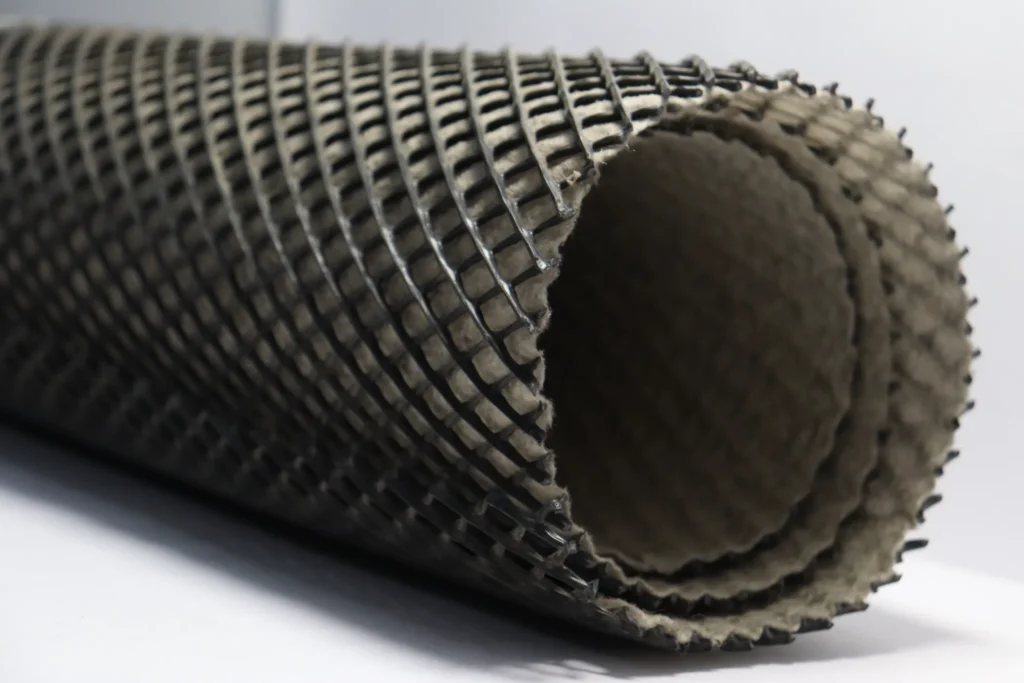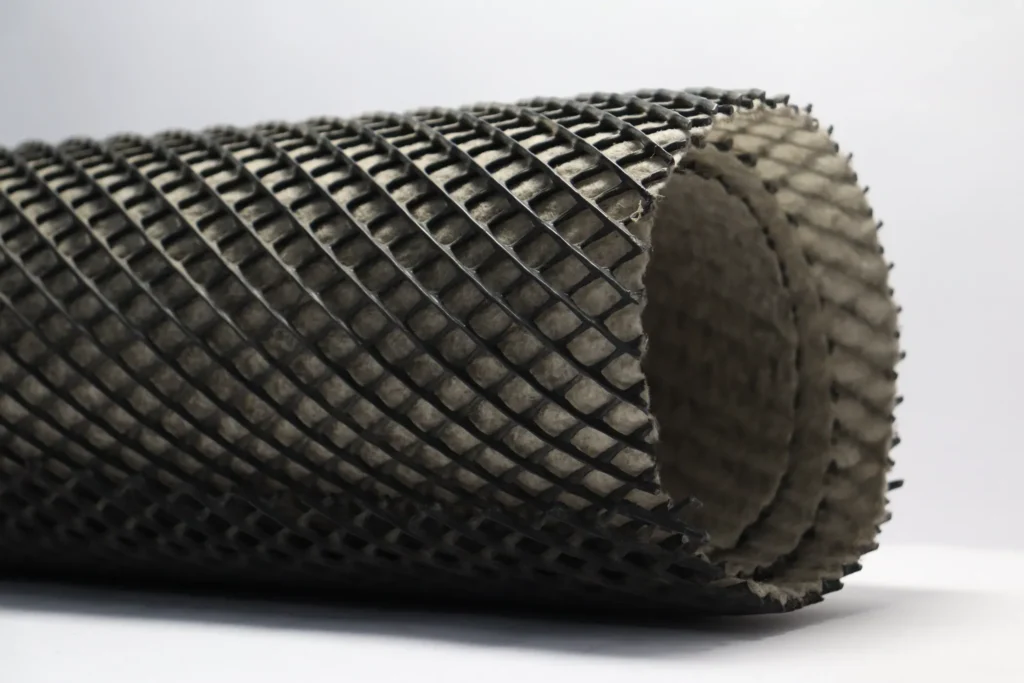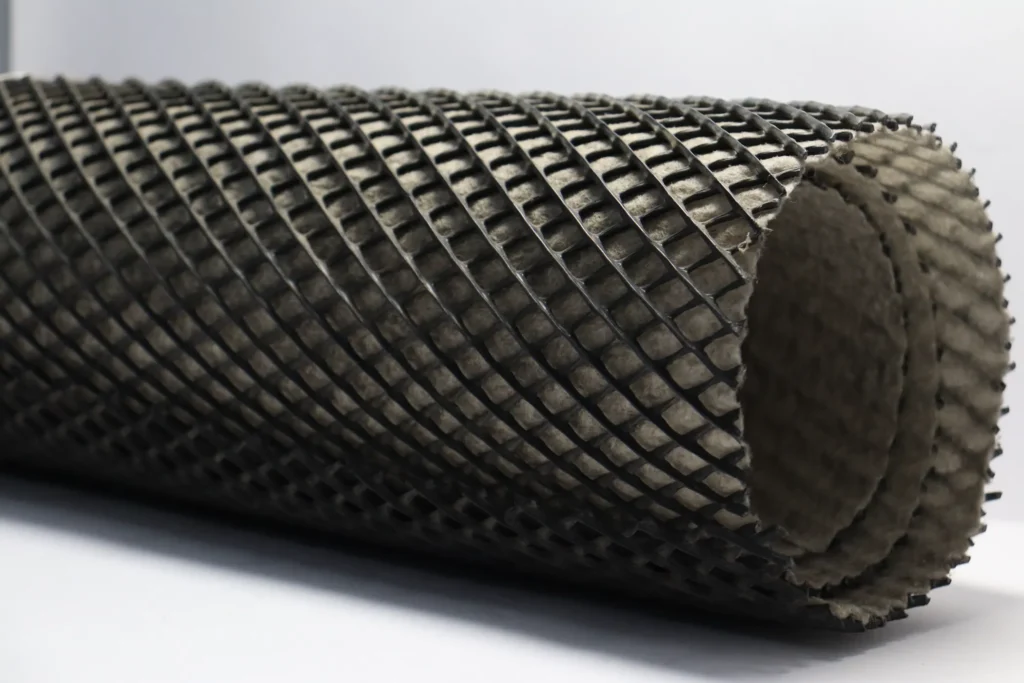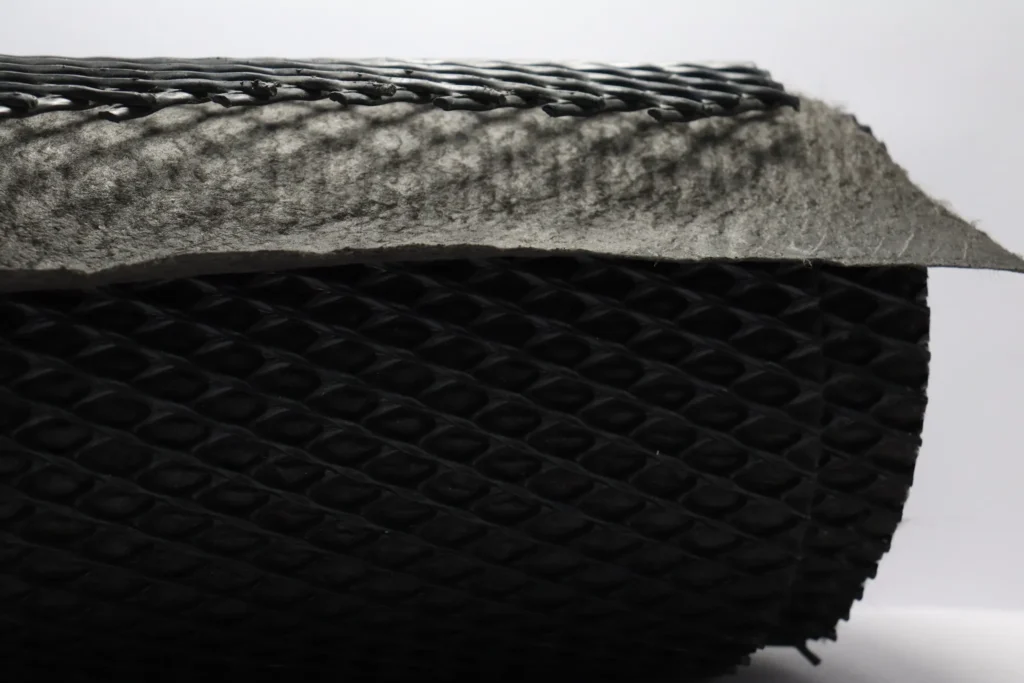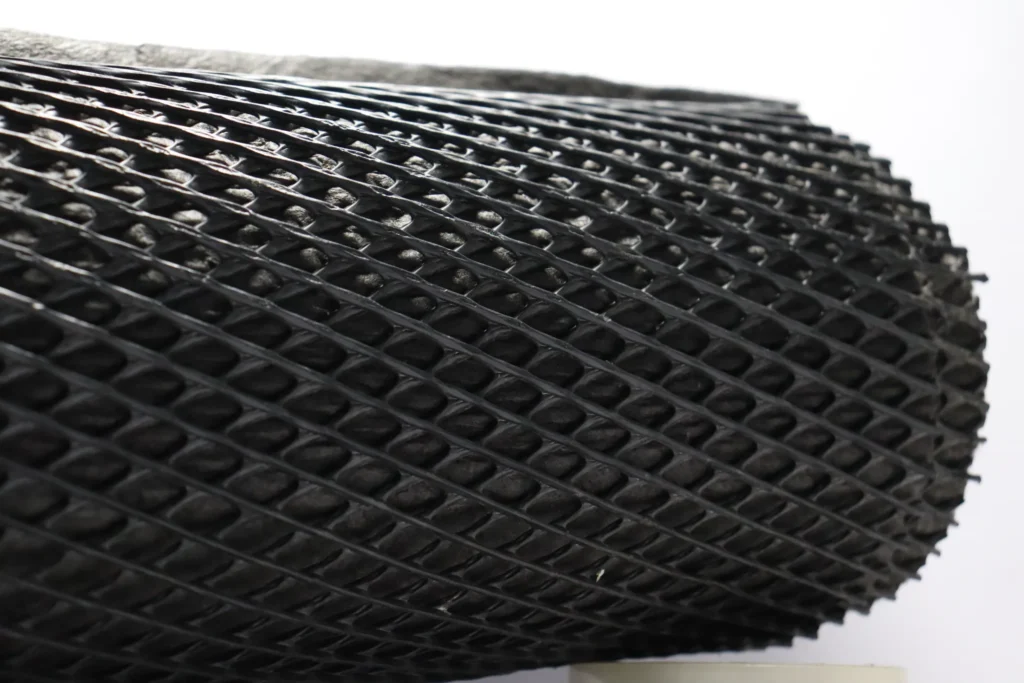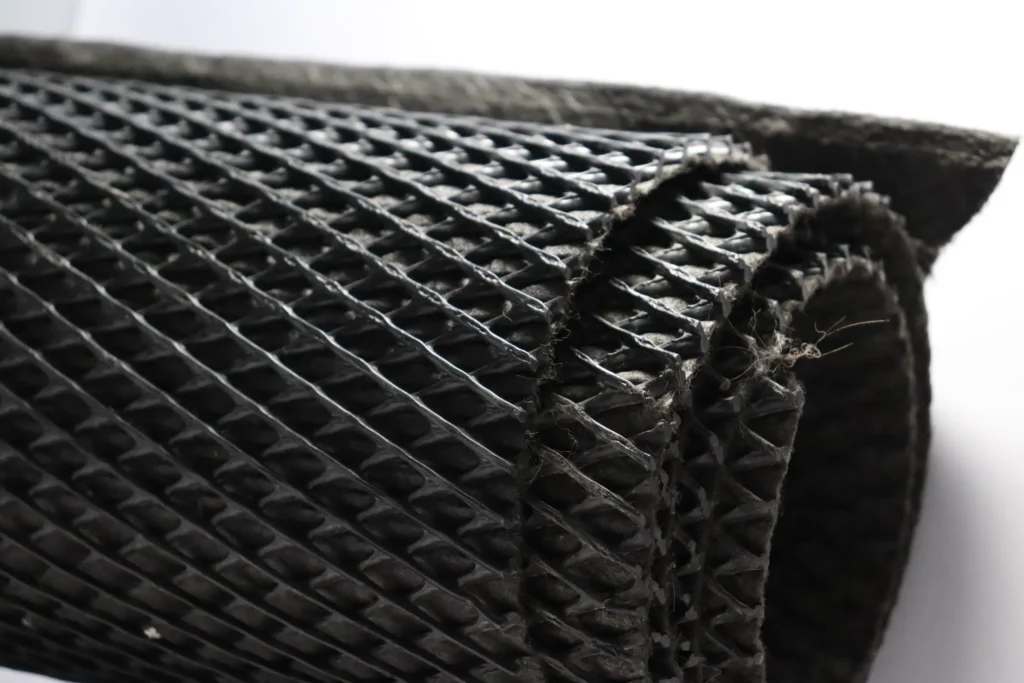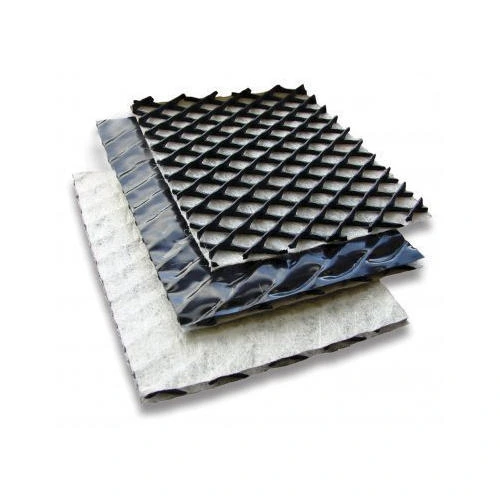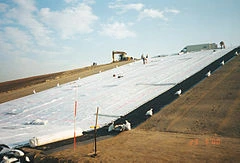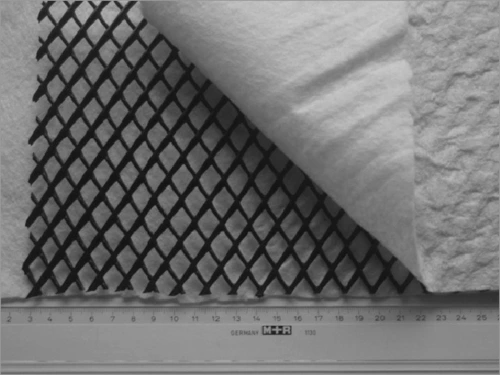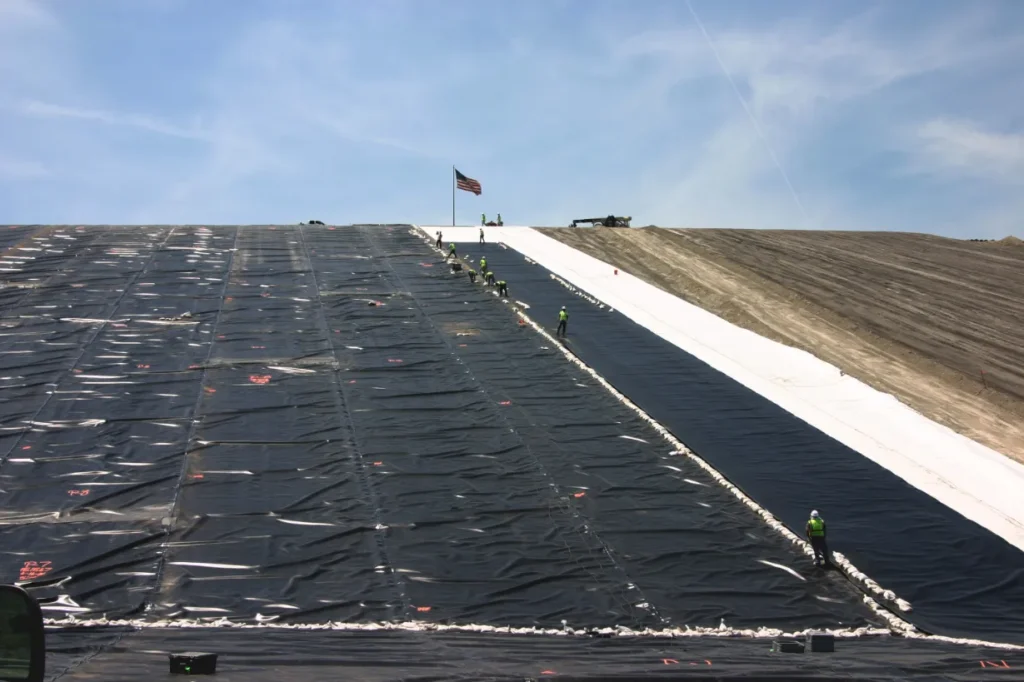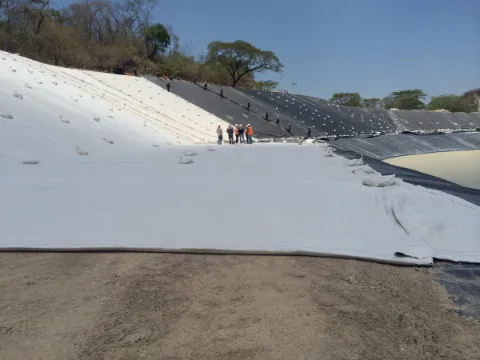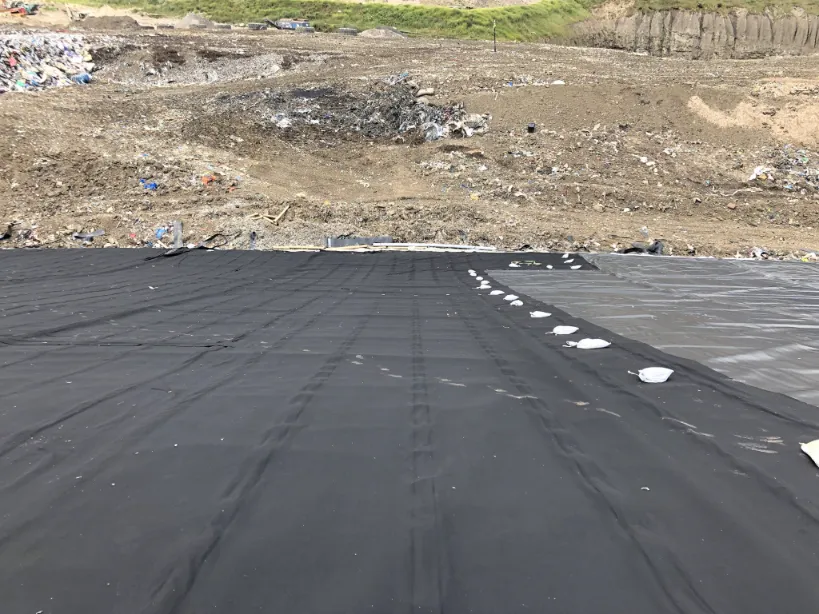Geocomposite Materials

What are Geocomposite Materials?
A geocomposite is made up of geotextile and geogrid, geogrid and geomembrane, geotextile, geogrid, and geomembrane, or any combination of these three elements plus another material (e.g., deformed plastic sheets, steel cables, or steel anchors). This interesting area showcases the engineer’s, manufacturer’s, and contractor’s greatest innovative efforts. The number of application areas is increasing all the time. The principal functions include all of the previously stated geosynthetic functions: separation, reinforcement, filtration, drainage, and liquid barrier.
Ocean Global in India manufactures Geocomposites that combine the best geosynthetic features and high-standard manufacturing methods to address specific applications in an optimal manner. We provide geocomposite materials like geotextile geonets, geogrids, HDPE geomembranes, geonets, geosynthetics clay liners, and more.
Geocomposites are geonets laminated on one or both sides with nonwoven geotextiles. An ecologically viable solution to traditional drainage materials, the geocomposites have varied widths. Geocomposites are a combination of two or more geosynthetic materials. geonet-geotextile, geomembrane-geotextile, or geogrid-geotextile. The combination provides improved benefits over single geosynthetic layers and enhances their functionality.
Table of Contents
Salient Features
- Lightweight
- Quick and easy installation
- Environment friendly
- They can withstand lateral displacement under vertical or horizontal soil movement.
- During installation, it leads to less soil displacement
- Cost-effective replacement
Types of Geocomposite Materials
Geotextile – Geonet Composites
The separation and filtering functions are always satisfied when a geotextile is used over or under a geonet, or when a geotextile-geonet-geotextile sandwich is made, but the drainage function is substantially increased over geotextiles alone. They form ideal drains to upwardly moving water in a capillary zone where frost heave or salt migration is a problem when placed horizontally. When water enters the sandwich, it goes horizontally across the geonet, away from any potential damage. These geocomposites have also been utilized to intercept and transport leachate in landfills, as well as to transmit vapor or water beneath various types of pond liners.
Geotextile – Geomembrane Composites
For a variety of purposes, geotextiles are laminated on one or both sides of a geomembrane. The geotextiles provide greater resistance to puncture, tear propagation, and sliding friction, as well as tensile strength in and of themselves, in the reinforcing area. Geotextiles, on the other hand, are frequently nonwoven, needle-punched, and of a somewhat hefty weight. Because of their in-plane transmissivity, they can channel water or leachate away from direct contact with the geomembrane in these situations, they operate as drainage media.
Geomembrane – Geogrid Composites
Because some types of geomembranes and geogrids are constructed of the same material (e.g., high-density polyethylene), they can be welded together to make an impervious barrier with increased strength and friction.
Geotextile – Geogrid Composites
By constructing a composite material with a geogrid, or even a woven fabric scrim, geotextiles with low modulus, poor strength, and/or high elongation at failure can be considerably improved. Each component’s synergistic properties usually improve the final output.
Geosynthetic – Soil Composites
Many different geosynthetic products and soils can be developed, as shown by the geosynthetic clay liners. Geocells and geotextiles, for example, are inflexible polymer strips that have been skillfully stacked vertically in a box-like pattern, positioned horizontally (standing upright), and filled with soil. As a result, the material produces a cellular structure, which, when combined with the included soil, results in a mattress that is incredibly sturdy and stable. On such structures, large earth embankments have been created, with the prospect of sustaining structures over unstable soils in the near future (i.e., an inexpensive mat foundation).
Another option is to create a steep slope with outstanding strength properties using continuous polymer fibers and sand. The fibers impart a high level of perceived cohesiveness to the composite material.
Geotextile / Polymer – Core Composites
When a core is in the shape of a quasi-rigid plastic sheet, it can be extruded or distorted in such a way that very large amounts of water can flow through it. As a result, it serves as a drainage core. On one or both sides, a geotextile acts as a filter to protect the core. There are numerous systems to choose from. This group includes strip, or wick, drains, and it has been suggested that the term “geospacer” be used to describe them.
The polymer core is commonly fluted for ease of water conductivity and fashioned into a 4 in. (100 mm) broad geotextile stocking. Traditional sand drains have all but disappeared as a quick way to consolidate fine-grained saturated soils since the introduction of geotextile polymer-core composites.
The hard polymer core can be nubbed, columned, or dimpled in the form of panels, and when combined with a geotextile on one side, it makes an excellent drain on the backfilled side of retaining walls, basement walls, and plaza decks. These cores are frequently generated in a vacuum. The geotextile acts as a filter, while the distorted polymer core acts as a drain, similar to strip drains. There are numerous systems of this type available, the most recent of which includes a thin malleable geomembrane that faces the wall and acts as a vapor barrier.
Finally, prefabricated edge drains are included in this category of drainage geocomposites. These materials, which are normally 45 cm wide, are put adjacent to a highway or railroad right-of-way to allow lateral drainage away from and out of the pavement area. Installation is incredibly quick, and the systems are exceedingly cost-effective.
Applications of Geocomposite Materials
A geocomposite is made up of one or more geosynthetics, such as a geogrid, geotextile, geomembrane, or geonet, combined with another material. Geotextiles are generally utilized for separation, filtration, reinforcing, and drainage purposes. Geogrids are used to strengthen soil or other materials in order to increase their strength. Geonets are planar geosynthetics that are used for drainage, whereas geopipes are subsurface plastic pipes that are used for drainage.
- In vertical applications like retaining walls, foundation, and chimney drainage, they reduce hydrostatic pressure. The geocomposites convey groundwater towards designated exit points.
- In horizontal applications such as roof drainage, parking decks, balconies, and planting beds, also, geocomposites direct water to the exits and obliterate pooling and damage.
- Drainage Geocomposites are a modern and costeffective substitute to the expensive traditional aggregate drainage systems.
- They are ideal for drainage on slopes.
- Geocomposites form a drainage layer in a multi-liner system.
- They find utility as drain layers in landfills and ponds.
- Drainage in landfill cap applications.
- Excellent for gas vents under ponds.
- Drainage in dam cores.
- Geocomposites act as a leak detection layer.
Functions of Geocomposite Materials
Separation, drainage, filtration, and reinforcing are all key functions of roadways that geocomposites are employed for. In a roadway, geocomposites can be utilized to improve the strength and stability of the underlying soil. The most often utilized geosynthetics in road and highway applications are geotextiles-geogrid geocomposites. Loaded vehicles on the road cause cuts and rutting, while water clogging in gaps causes erosion and shortens the life of the road.
For the road industry, geocomposites boost road life and cost-effectiveness. Rail track maintenance is crucial because uneven tracks can cause accidents. Under the railway tracks, geocomposites are employed for stability and reinforcement. They also serve as a filter separator between the ballast and the sub-grade, as well as a lateral drainage system.

